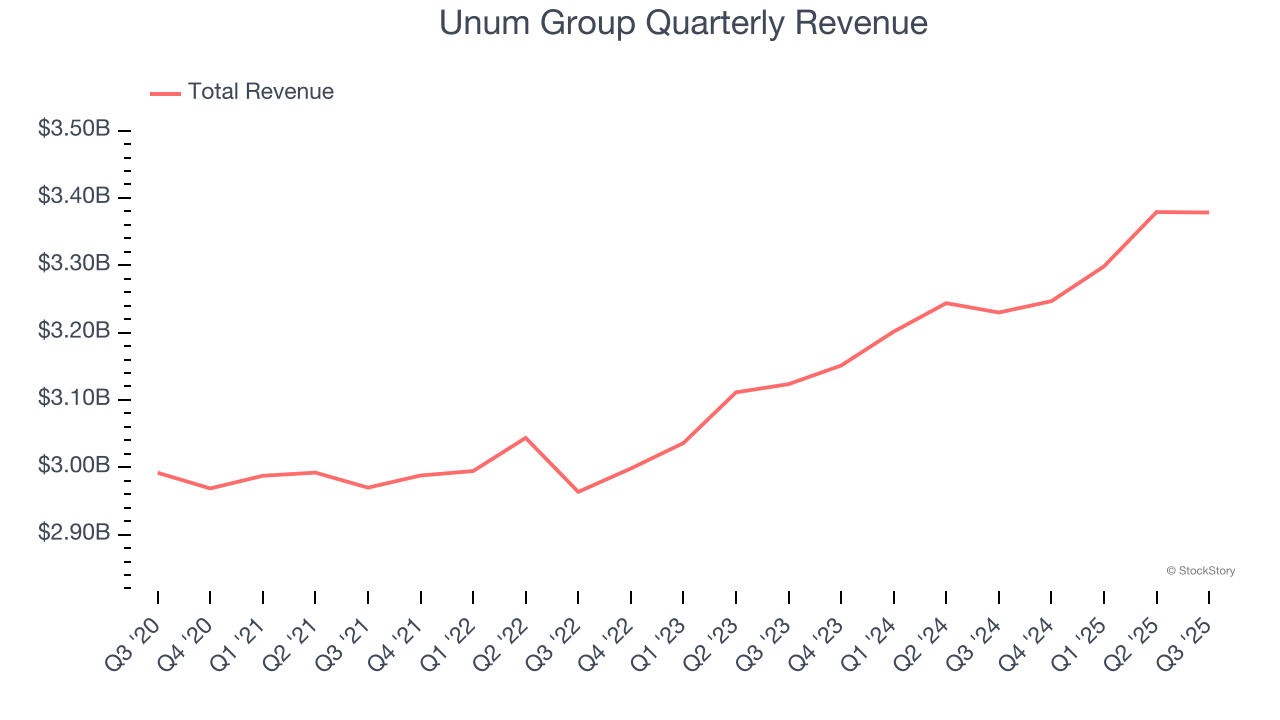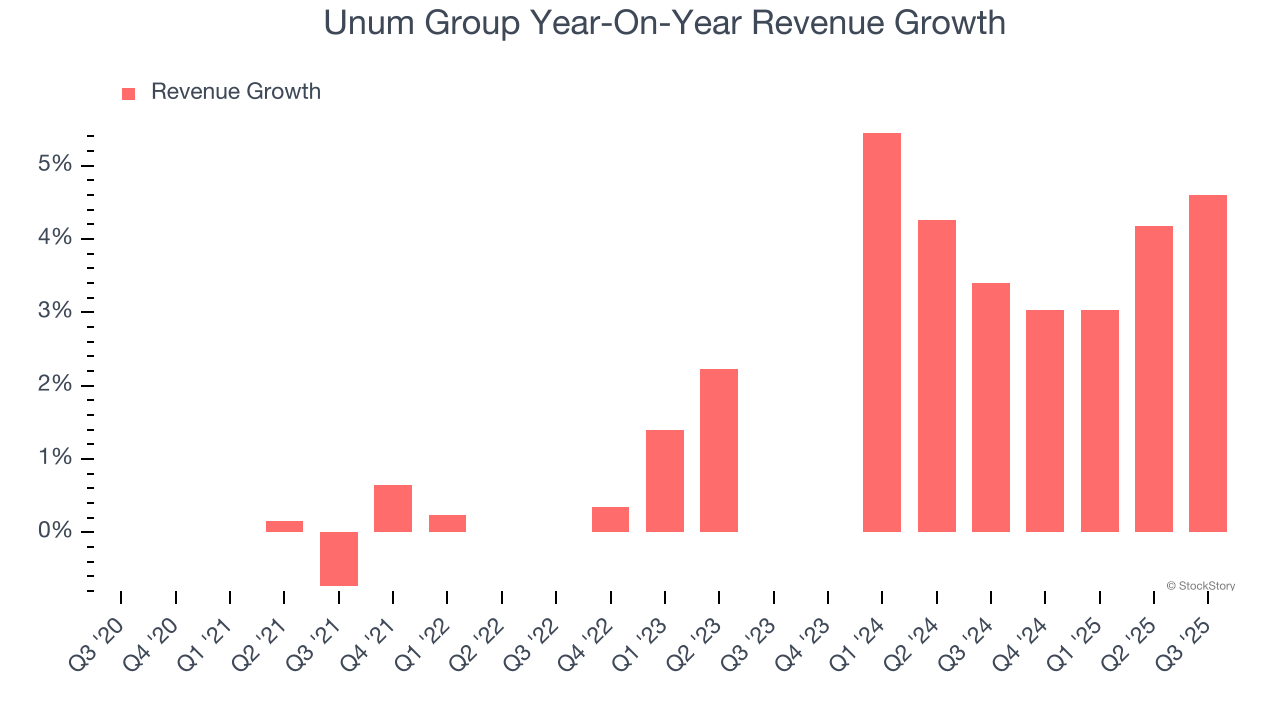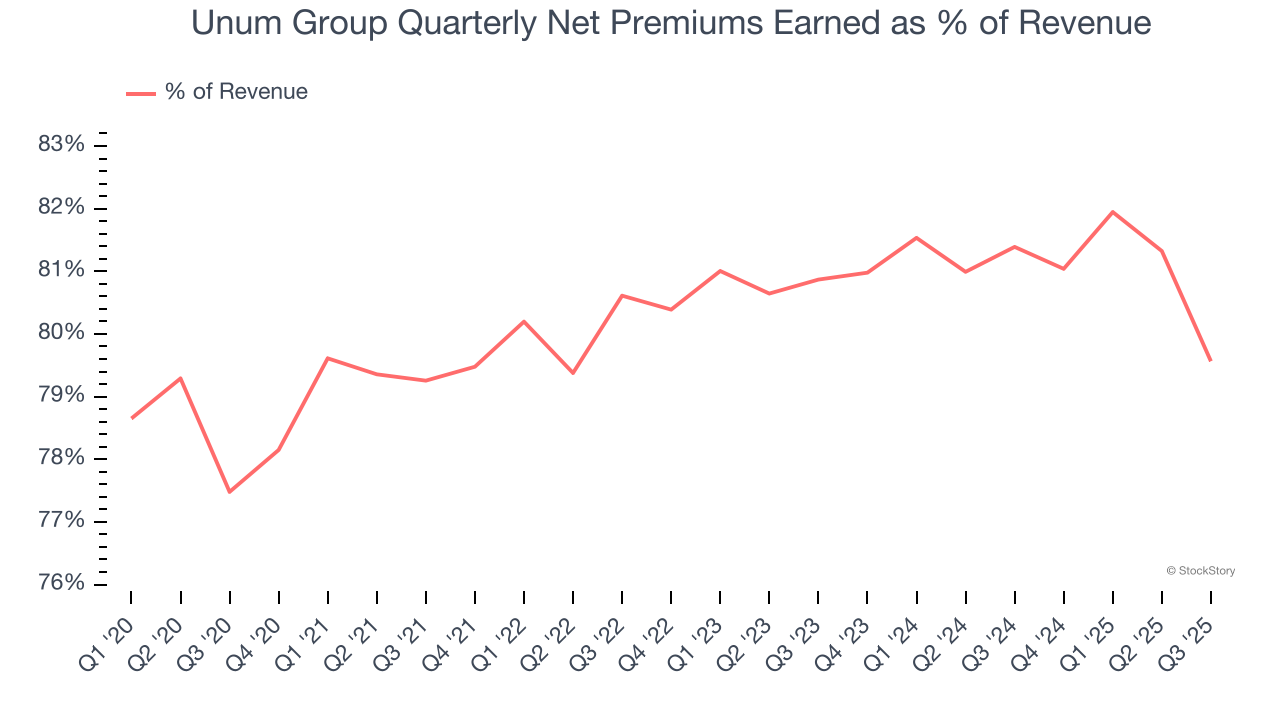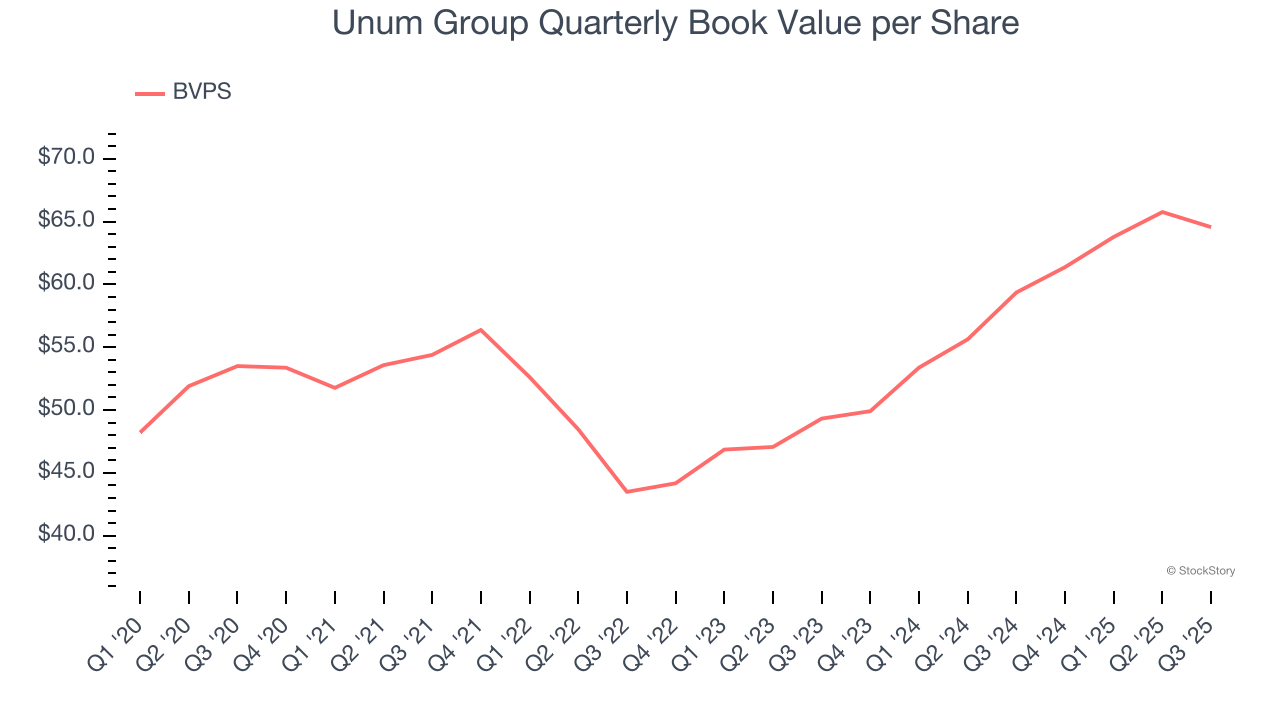
Employee benefits provider Unum Group (NYSE: UNM) announced better-than-expected revenue in Q3 CY2025, with sales up 4.6% year on year to $3.38 billion. Its non-GAAP profit of $2.09 per share was 2.7% below analysts’ consensus estimates.
Is now the time to buy Unum Group? Find out by accessing our full research report, it’s free for active Edge members.
Unum Group (UNM) Q3 CY2025 Highlights:
“We delivered solid top and bottom-line performance across our core businesses in the third quarter. Our premium and sales growth reflect sustained demand and customer retention for our market leading offerings,” said Richard P. McKenney, president and chief executive officer.
Company Overview
Tracing its roots back to 1848 when financial security for workers was virtually non-existent, Unum Group (NYSE: UNM) provides workplace financial protection benefits including disability, life, accident, critical illness, dental and vision insurance primarily through employers.
Revenue Growth
Insurance companies earn revenue from three primary sources: 1) The core insurance business itself, often called underwriting and represented in the income statement as premiums 2) Income from investing the “float” (premiums collected upfront not yet paid out as claims) in assets such as fixed-income assets and equities 3) Fees from various sources such as policy administration, annuities, or other value-added services. Regrettably, Unum Group’s revenue grew at a sluggish 2% compounded annual growth rate over the last five years. This was below our standards and is a tough starting point for our analysis.

Long-term growth is the most important, but within financials, a half-decade historical view may miss recent interest rate changes and market returns. Unum Group’s annualized revenue growth of 4.1% over the last two years is above its five-year trend, but we were still disappointed by the results.  Note: Quarters not shown were determined to be outliers, impacted by outsized investment gains/losses that are not indicative of the recurring fundamentals of the business.
Note: Quarters not shown were determined to be outliers, impacted by outsized investment gains/losses that are not indicative of the recurring fundamentals of the business.
This quarter, Unum Group reported modest year-on-year revenue growth of 4.6% but beat Wall Street’s estimates by 2.2%.
Net premiums earned made up 80.4% of the company’s total revenue during the last five years, meaning Unum Group barely relies on non-insurance activities to drive its overall growth.

Our experience and research show the market cares primarily about an insurer’s net premiums earned growth as investment and fee income are considered more susceptible to market volatility and economic cycles.
Microsoft, Alphabet, Coca-Cola, Monster Beverage—all began as under-the-radar growth stories riding a massive trend. We’ve identified the next one: a profitable AI semiconductor play Wall Street is still overlooking. Go here for access to our full report.
Book Value Per Share (BVPS)
Insurance companies are balance sheet businesses, collecting premiums upfront and paying out claims over time. The float – premiums collected but not yet paid out – are invested, creating an asset base supported by a liability structure. Book value captures this dynamic by measuring:
- Assets (investment portfolio, cash, reinsurance recoverables) - liabilities (claim reserves, debt, future policy benefits)
BVPS is essentially the residual value for shareholders.
We therefore consider BVPS very important to track for insurers and a metric that sheds light on business quality. While other (and more commonly known) per-share metrics like EPS can sometimes be lumpy due to reserve releases or one-time items and can be managed or skewed while still following accounting rules, BVPS reflects long-term capital growth and is harder to manipulate.
Unum Group’s BVPS grew at a sluggish 3.8% annual clip over the last five years. However, BVPS growth has accelerated recently, growing by 14.4% annually over the last two years from $49.32 to $64.56 per share.

Over the next 12 months, Consensus estimates call for Unum Group’s BVPS to grow by 28.9% to $78.60, elite growth rate.
Key Takeaways from Unum Group’s Q3 Results
We enjoyed seeing Unum Group beat analysts’ revenue expectations this quarter. On the other hand, its book value per share missed and its net premiums earned fell short of Wall Street’s estimates. Overall, this was a weaker quarter. The stock traded down 4.1% to $70 immediately after reporting.
Unum Group’s latest earnings report disappointed. One quarter doesn’t define a company’s quality, so let’s explore whether the stock is a buy at the current price. What happened in the latest quarter matters, but not as much as longer-term business quality and valuation, when deciding whether to invest in this stock. We cover that in our actionable full research report which you can read here, it’s free for active Edge members.






